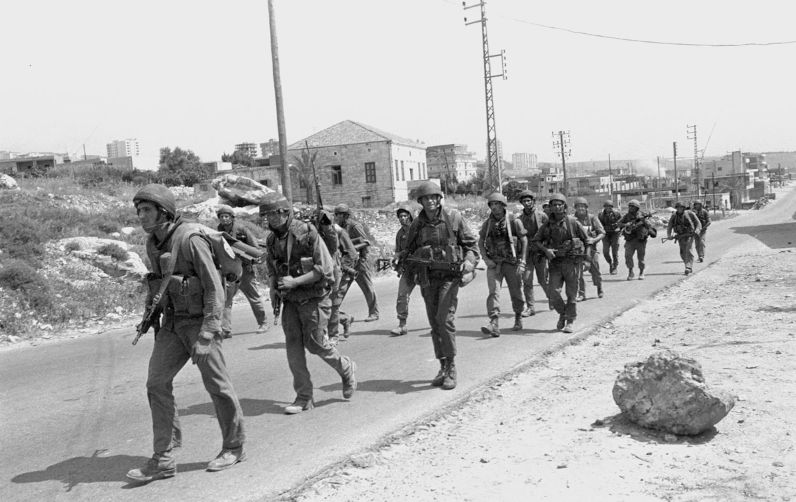The ghosts of 1982 are hovering over Beirut.
It was in the northern summer of that year that IDF forces under the command of General Ariel Sharon captured Beirut. They were there ostensibly to smoke out Yasser Arafat, the leader of the Palestine Liberation Organisation who had been based in Lebanon since his group’s expulsion from Jordan in 1971.
In pursuit of this aim, the whole city was held to ransom. Israeli forces laid total siege on the Lebanese capital in what is remembered by survivors as the most catastrophic phase of the fifteen-year Civil War (1975–1990).
There are unmistakable parallels to the situation of the past 12 months, if one substitutes Hezbollah for the PLO. When Israeli troops had first invaded Lebanon in 1978, they remained south of the Litani River. The subsequent siege of Beirut in 1982, as the emergent siege of 2024, represented a major escalation.
Beirut in 1982 was also an operational template for the ongoing siege of Gaza. In 1982, Israeli forces blockaded the entry of food supplies to Beirut and cut off water and electricity. Israeli planes carpet-bombed the western and southern neighbourhoods of the city – where Palestinian refugees ethnically cleansed from their homeland in 1948 were concentrated.
What was most noticeable to witnesses and observers was the indiscriminate nature of the shelling of the city. The US Ambassador to Lebanon at the time, Robert S. Dillon, described the scale of the destruction in early August 1982: “Simply put, tonight’s saturation shelling was as intense as anything we have seen. There was no ‘pinpoint accuracy’ against targets in ‘open spaces’. It was not a response to Palestinian fire. This was a blitz against West Beirut.”
This kind of “saturation shelling”, to borrow Dillon’s description, is a form of what urban geographers have sometimes called urbicide: literally, “city-killing”. Urbicide refers to the deliberate destruction of the built environment for reasons other than military strategy. It includes destroying the landscapes of meaning in which cultural identity is embodied, such as the wanton destruction of sites of cultural heritage, like Gaza City’s Greek Orthodox Church of Saint Porphyrius, the third oldest functioning church in the world, or the obliteration of the entire higher education sector in Gaza.
Such intentional damage – taking out both vital operational infrastructure like highways, airports, electricity sub-stations, as well as cultural infrastructure like places of worship and schools – is calculated to make day-to-day life simply unbearable. This model, pioneered in Beirut in 1982, practised on multiple occasions in the intervening period, notably in Lebanon in 2006, and sharpened in Gaza since October 2023, is now being aimed back at Lebanon once again. Israel’s allies and enablers cannot claim to have not seen this before.
There is yet another way in which 1982 hovers over the present. One of the key consequences of the Israeli invasion of Lebanon was the emergence of new organisations of armed resistance, including Hezbollah.
In 1985, Israeli forces withdrew to the south of the country, which they continued to occupy until 2000. It was the decades-long, guerilla-style confrontation with occupying foreign forces that solidified Hezbollah’s raison d’être and bolstered its political capital inside Lebanon, well beyond the “Shiite community”, contra what is implied by sectarian-focused analyses of the country.
The rise and fall in Hezbollah’s wider domestic support within Lebanon over time have been directly linked to Israel’s posture towards Lebanon. In other words: the idea that eradicating the group will somehow kill the spirit of resistance within Lebanon and Lebanese solidarity with Palestinian aspirations for self-determination is pure, genocidal, fantasy. All the hand-wringing over Hezbollah by the political class in Australia misses this basic point: the group, or a similar organisation, will have support in Lebanon for as long as the threat of Israeli invasion remains, and until there is a just solution to the Palestine question.
The end of the siege of Beirut came with real diplomatic and political consequences for Israel.
In 1982, US President Ronald Reagan protested vehemently to Israeli Prime Minister Menachem Begin. It was this intervention that reportedly pushed Israel to stop the siege of the city. Ariel Sharon was subsequently stripped of his powers by the Israeli cabinet. A few months later, he was found by an official government investigation, the Kahan Commission, to have personal responsibility for the Sabra and Shatila massacres committed against Palestinian refugees by Lebanese militias allied to Israel, with the knowledge of the occupying forces.
Will we see equivalent accountability for Israel’s generals and government ministers for their actions and decisions today? At this point, it seems unlikely.
However, before the body bags line the streets of Beirut once more, it is high time that Western governments stop enabling the carnage.
Stephen Pascoe is a lecturer in Middle East history at the University of New South Wales, Sydney.

